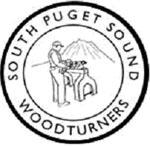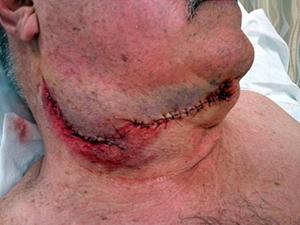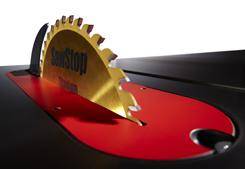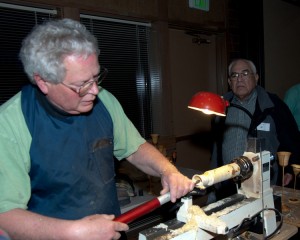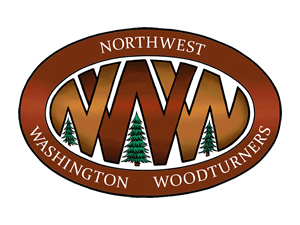[warning]This account and image of an horrific injury resulting from careless use of a rotary carver was forwarded to many woodworking clubs. We have posted it here also to make sure as many people as possible have seen it to emphasize that safety comes first. The original author has provided his permission to re-post.[/warning]
The purpose of this post is to help prevent others from having an accident while carving legs on a bowl. I have posted several pictures of natural edge bowls with carved legs and feel a sense of responsibility to warn others of the dangers of using a King Arthur’s Lancelot carving disk. The 4 “disk is made with a small piece of chain saw chain with 22 teeth that circle the disk. The disk is mounted on a 4 ½” grinder and is extremely aggressive and dangerous and runs at 40,000 RPM’s.
WoW member and friend Dennis Doebler had seen several of my 3 leg bowls and wanted to turn and carve a bowl with legs. I had offered to show Dennis how I carve the legs so he would have a total and complete understanding of how to safely carve the legs. I made absolutely sure that Dennis understood how dangerous the Lancelot tool can be.
All of the carving I do is performed between centers on the lathe. The piece is jam chucked and the tail stock is brought up to secure the piece so that it can not move. The headstock locking pin is engaged and the pressure between centers is very strong to insure that the piece to be carved will not move. TWO HANDS AT ALL TIMES is the only way I ever use the Lancelot.
Dennis decided to carve the legs in his shop with no direction or supervision. Dennis will tell you that this was a huge mistake. The bowl was turned and ready to carve. Dennis removed the bowl from the lathe, set it on the work bench, plugged in the grinder with the Lancelot carving disk and was ready to begin carving. He sat at his stool, picked up the grinder, turned it on and held the grinder with one hand and the bowl with the other. The instant that Dennis touched the grinder to the bowl, the grinder violently jumped out of his right hand striking his left hand then surged upward striking him under the chin then powered around his neck to just below his right ear. He was air lifted by Life Flight to the University of Kentucky Hospital. His little finger, ring finger and middle finger were badly injured requiring 2 hours of initial surgery to close the wounds and an additional 3 hours of surgery yesterday to reconnect the tendons and ligaments. The knuckles and bone were ground into powder by the Lancelot and no useable bone fragments existed. The Lancelot cut into Dennis’ neck more than two inches deep, missed his jugular vein by 2 millimeters, miraculously skipped over his carotid artery, dug back in and continued cutting around his neck to just below the right ear. It took well over 100 stitches to close the injuries to his neck. Dennis said the doctors quit counting when they reached 100 stitches then continued sewing him up for over one additional hour.
Dennis called this evening, assisted in the writing of this and asked me to post this information for him. He is facing several months of healing and physical therapy before he can get back to turning.
Dennis insisted on posting this information in an attempt to help keep others safe from doing the same thing.
If you are going to use the Lancelot, please make sure the piece you intend to carve is mounted solid so that it can not move and use both hands when carving with the grinder and the Lancelot.
